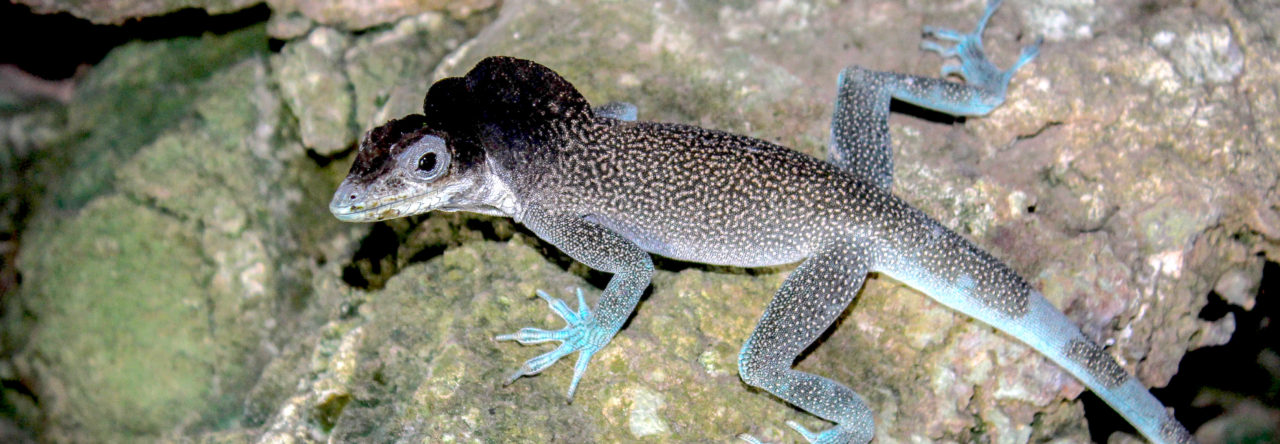Anoles fall prey to a variety of animals. Here, a male brown anole, A. sagrei, is being subdued and swallowed by a black racer (Coluber constrictor). Casey Gilman and I heard the two animals struggling while working on spoils islands in Mosquito Lagoon.
All of these islands have Florida-native green anoles (Anolis carolinensis) on them. Most islands also have the brown anole, an invasive species. In his Anolis Newsletter VI contribution, Nathan Turnbough found a non-random association between brown anole presence and racer presence on Mosquito Lagoon islands. He concluded that high densities of brown anoles support more racers.
Green anoles tend to become more arboreal in the presence of brown anoles. It is generally thought that direct interactions between the species, like resource competition or intraguild predation, cause this habitat shift. However, by increasing the density of predators, brown anoles may also indirectly affect green anole habitat use. The habitat shift may result from green anoles getting out of the way of ground-foraging racers – an escape to enemy free space.





